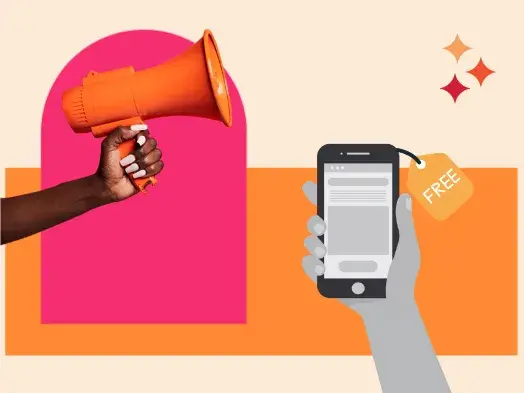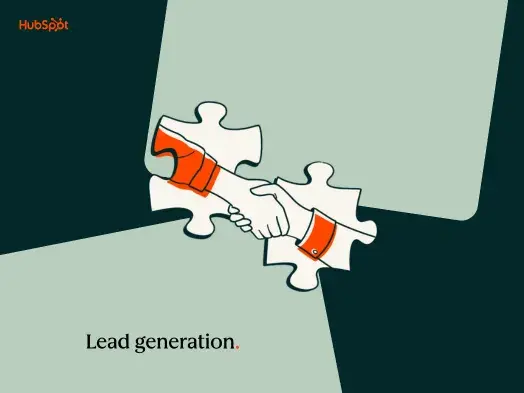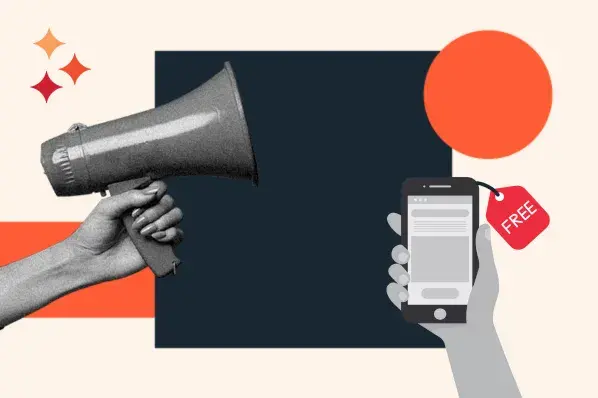If you're a marketer, you definitely know it's no easy feat to convert visitors into leads. There are a ton of potential blockers that can either distract, prevent, or turn off potential leads from filling out your forms. So as a marketer, one of your goals should be to create a lead generation process that's as frictionless as possible. To achieve this, you need to remove all of those distracting, annoying, and confusing obstacles that commonly prevent visitors from converting.
Want to ensure you're creating as frictionless a conversion process as possible? Follow these 10 tips.
10 Guaranteed Ways to Create a Frictionless Conversion Process
1. Shorten Your Lead-Capture Forms: Think that 20-field form just might have something to do with the low quantity of leads you're generating? We do. An uber-long lead-capture form is one of the quickest ways to scare potential leads away from your landing page and make them question, "Is this offer really worth it?" You probably don't really need to know your lead's favorite color, so ask only for the information you need to contact and adequately qualify your leads, and understand that there is a delicate balance between quantity and quality.
2. Create Targeted Landing Pages: The more targeted your landing pages are, the more aligned they'll be to your specific visitors' needs, making it much more likely they'll be enticed to convert on your offer. If you're promoting a landing page to a segment of your prospects that you've identified as having interest in a certain topic or having a specific need, tailor the landing page to speak to those needs and address those topics.
3. Remove Top/Side/Bottom Navigation: If prospects make their way to your landing page, don't you want to keep them there? Streamline the conversion process by removing any other top/side/bottom website navigations from your landing pages to keep visitors from feeling compelled to leave and visit another page on your site. Once they convert, bring back the navigation and consider including a secondary call-to-action on your thank-you page to keep them engaged with your brand.
4. Get Rid of Other CTAs on Landing Pages: Just as you should remove navigation links from your landing pages, you also shouldn't distract them from the offer you're promoting there by showcasing other conflicting calls-to-action for other offers. Keep your page focused on that offer, and focus your efforts on convincing visitors to convert there rather than giving them a reason to go someplace else.
5. Create Clear and Optimized CTAs for Your Website/Blog: As a marketer, not only should you be creating landing pages for your offers, but you should also be optimizing your website and blog for conversion, too. The best way to do this is to place relevant calls-to-action on your web pages, blog, and individual blog articles. In fact, the only places you shouldn't have CTAs are your landing pages, as we discussed earlier. Think of CTAs as ads for your offers. Align the language of your CTAs with the pages and content you place them on to create a more relevant and frictionless experience for visitors.
6. Share Landing Page Links in Social Media: Savvy inbound marketers understand that social media can be an effective tool for lead generation. But savvy inbound marketers also understand how to do it right. Because social media users aren't yet on your website, you need to create as few steps as possible to convert them into a lead. Rather than promoting an offer and sending social media fans/followers to your website's homepage, direct them to the unique landing page for that offer. That said, if you want to make a game out of it, you can send them to your homepage and make them guess where to go and what to do next to receive your offer. We just wouldn't recommend it.
7. Stick to One CTA in Email Marketing: Just as your landing pages should only be honing in on one offer, so should your email messages. Focus your energy around communicating how valuable that one offer is rather than splitting your attention amongst two or more offers.
8. Put Landing Page Forms Above the Fold: 'Above the fold' simply means the visitor doesn't have to scroll down to see the form. Make sure your form is easily visible, and the visitor understands that in order to receive the offer you're providing, filling out the form is essential. Making your visitors scroll down is just another way to create friction.
9. Use Actionable Language: Tell visitors exactly what to do by using actionable, definitive language in your CTAs, on your landing pages, and in form 'submit' buttons. Examples of this include "Download Your Ebook Now" and "Register for the Webinar Today." There should be no guesswork involved in understanding how visitors can obtain your offer.
10. Just Make it Easy: In general, just don't make your visitors jump through all sorts of hoops in order to obtain your offer. Dumb it down, and make the process as easy as possible. If you wouldn't fill out the form or wouldn't even be able to figure out how to make your way to that landing page in the first place, it's safe to assume your prospects won't either.
In what other ways can you reduce friction in your lead generation process?
Image Credit: Emilian Robert Vicol

Lead Generation


![What is a lead magnet? 20 lead magnet ideas and examples [+ step-by-step]](https://53.fs1.hubspotusercontent-na1.net/hubfs/53/lead%20magnet%20represented%20by%20a%20magnet.webp)




![Gated Content: What Marketers Need to Know [+ Examples]](https://53.fs1.hubspotusercontent-na1.net/hubfs/53/UNGated%20Content.png)

![What Is Demand Generation? Here’s How You Can Create Buzz for Your Offering [FAQs]](https://53.fs1.hubspotusercontent-na1.net/hubfs/53/demand-generation-1-20250321-225687.webp)

